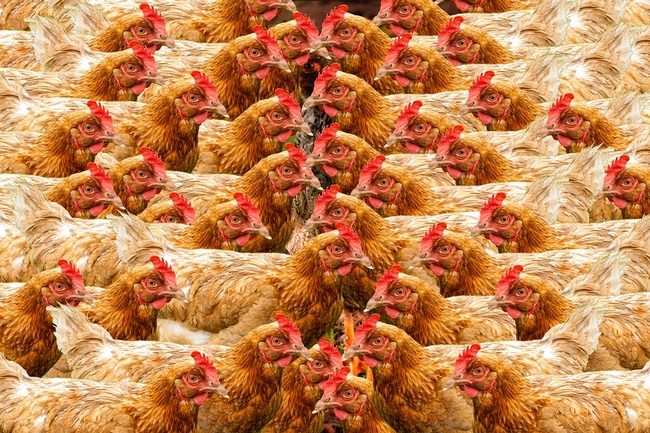Prop 12 builds on food animal welfare initiative passed 10 years ago
Proposition 12, a measure on California's Nov. 6 ballot, builds on the successful ballot measure Prop. 2, which 10 years ago required veal calves, breeding pigs and egg-laying hens to be kept on farms that allowed them to turn around freely, lie down, stand up and extend their limbs, reported Paul Rogers in the Mercury News.
However, CDFA issued guidelines that said chickens could still be kept in cages and be in compliance with the law. That prompted sponsors - including the Humane Society, the American Society for the Prevention of Cruelty to Animals and other groups - to propose Prop 12, which will tighten the law. If passed by a simple majority, the new proposition would require 43 square feet of space for each calf raised for veal by 2020, 24 square feet for each breeding pig by 2022 and one square foot per hen by 2020, with all egg-laying hens required to be cage-free by 2022 — in other words, allowed to roam around a barn or large coop. Farmers from other states would also have to comply with these dimensions to sell their products in California.
Since Prop 2 went into effect, egg prices increased by 9 percent. California is also producing fewer eggs. In 2007, 5.3 billion eggs were laid by California chickens, with a value of $346 million. By 2015, California chickens laid 3.5 billion eggs with a value of $210 million.
Some of the decline would have happened anyway, said economist Daniel Sumner, director of UC Agriculture and Natural Resources' Agricultural Issue Center.
“The egg industry has been declining for decades in California,” Sumner said. “Raising eggs is about converting corn and soybeans to eggs. It's expensive to haul corn and soybeans around. And we don't grow corn and soybeans in California.”
But Sumner predicted if Prop 12 passes, it will raise the price of some types of eggs, perhaps by as much as 50 percent, and the price of veal and pork by about 20 percent.
“People spend 50 to 100 dollars a year on eggs,” Sumner told reporter Lesley McClurg of KQED. “It'll go up to $100 to $150.”
Though another factor could also be at play in egg prices: an uncertain future.
“The concern for the people investing in these new standards is that it's not at all clear that they're going to last very long,” says Sumner.

